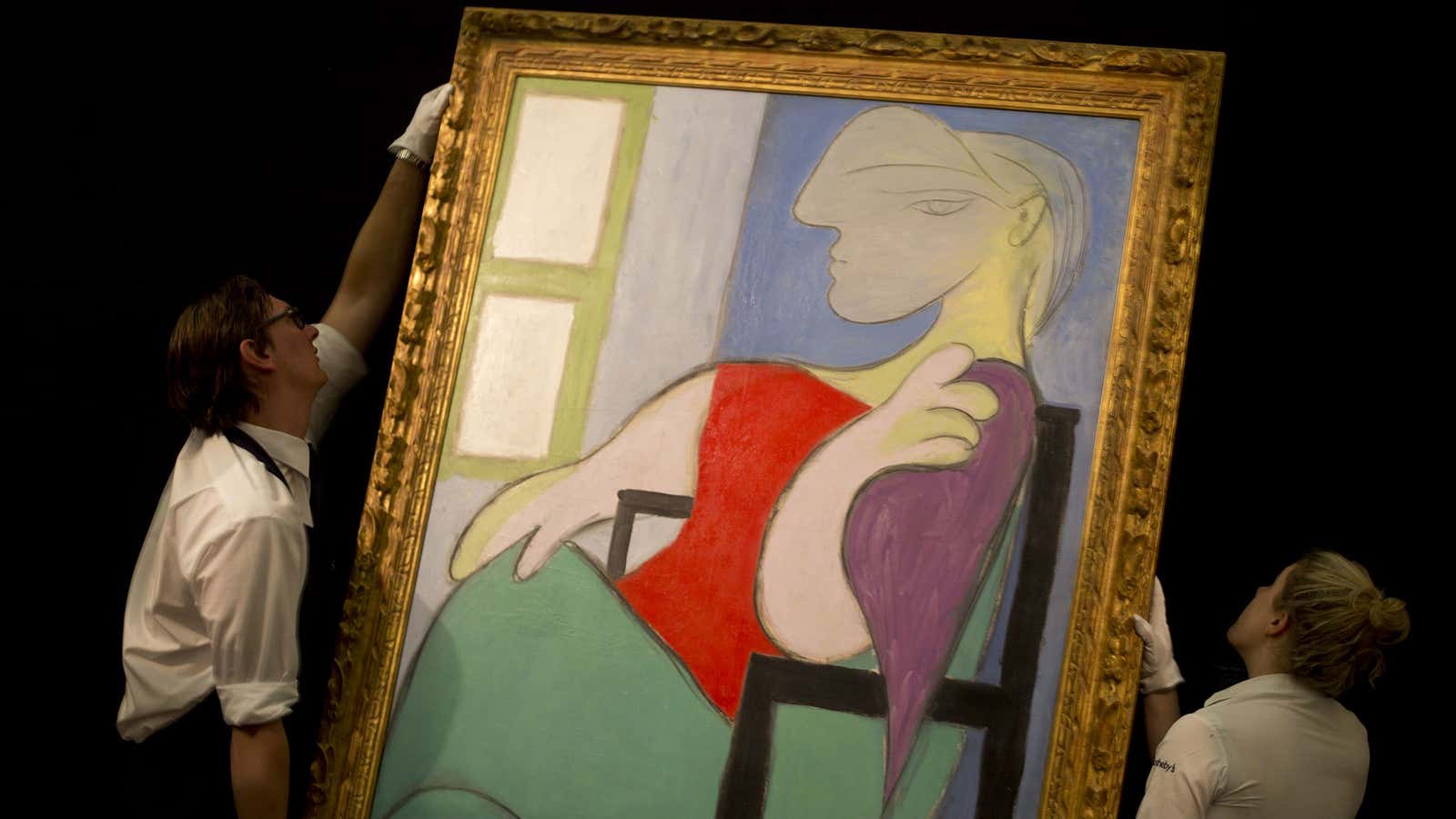This item has been corrected.
Sotheby’s and eBay announced a new partnership yesterday. Beginning late this year or early next, the blue-chip auction house will livestream the majority of its New York auctions on a dedicated section of the e-marketplace’s website.
We’ve heard this before.
This collaboration isn’t an entirely new development—the companies launched, and quickly canceled, a partnership in 2002 after each engaging in similarly failed attempts with other parties.
Today’s announcement marks the fifth such attempt between them. Here, in chronological order, are the beginnings and endings of the partnerships they’ve formed to date—all in the name of making fine art, fine wines, antiques, books, jewels, watches and furniture available to the online masses.
April 26, 1999: eBay acquires Butterfield & Butterfield, the West coast’s oldest auction house, for $260 million. It is reported that eBay has also been in partnership talks with Sotheby’s, as well as its storied rival Christie’s, but sources close to both auction houses claim the talks have concluded.
June 16, 1999: Sotheby’s partners with Amazon.com to sell art and collectibles through the online retailer’s site, hoping to create a marketplace separate from its existing auctions. The companies agree that Amazon will invest $35 million in the auction house.
Oct. 10, 2000: Amazon and Sotheby’s announce a friendly dissolution of their jointly operated auction site, Sothebys.Amazon.com. Skeptical customers and the lots’ frequently questioned authenticity are factors in the partnership’s failure.
Oct. 19, 1999: eBay launches Great Collections, a site offering more expensive merchandise—including fossilized pine cones, Hepplewhite armchairs, and New York Yankee Joe DiMaggio’s bats—sourced from Butterfield & Butterfield and similarly reputable auction houses. The company states that the site stemmed from the recent acquisition of Butterfield.
Jan. 31, 2002: Sotheby’s and eBay announce a partnership wherein Sothebys.com will appear within eBay’s site, taking advantage of its bidding technology. The collaboration is intended to drive more customers to the auction house while providing the e-commerce outlet with increased access to expensive art. Sotheby’s hires almost 200 staff members to support the project with vice chairman David Redden claiming to use eBay all the time.
eBay also reveals that it will shut down Great Collections, now called eBay Premier, in the summer. The company explains that the site did not generate as much activity as it had hoped.
Aug. 1, 2002: eBay announces the sale of Butterfield & Butterfield to London-based auction house Bonhams for an undisclosed, all-cash sum. It states that “offline” auctions, including Butterfields, have not been profitable, accounting for only 3% of its $266 million in revenue in the most recent quarter.
Feb. 6, 2003: Sotheby’s announces that it will no longer hold online auctions at Sothebys.Ebay.com, a site that links to and was built by eBay. Representatives say the partnership will officially dissolve in May, citing its failure to generate a profit. The company continues to struggle with a relatively new web presence, revealing a loss of approximately $100 million on Internet operations in the span of roughly three years.
July 14, 2014: Sotheby’s and eBay announce a second partnership focused on live broadcasting auctions.
Late 2014/Early 2015: Sotheby’s will begin livestreaming most of its New York auctions on eBay’s site.
And beyond: To further expand the partnership, Sotheby’s plans to stream auctions taking place across the globe (the company also has houses in London, Paris, Milan, Zurich, Geneva, Doha, Beijing, and Hong Kong) and to add online-only sales.
So what’s different this time? It’s important to note that all previous partnerships were forged between 1999 and 2002, more than a decade ago and before the smartphone revolution. Both companies have expressed a desire to take advantage of the increasing use of mobile devices, citing growing online art sales, which are projected to increase to $13 billion by 2020.
It seems that Sotheby’s and eBay are banking on smartphones to make all the difference. Maybe the fifth time’s a charm.
Follow Nina on Twitter @NinaStollerLind. We welcome your comments at ideas@qz.com.
Correction: A previous version of this article stated that eBay’s acquisition of Butterfield & Butterfield happened on Apr. 16, 1999, while the correct date was Apr. 26, 1999. The article also stated that eBay’s announced the end of auctions at Sothebys.Ebay.com on Feb. 6, 2004—the announcement happened on Feb. 6, 2003.
